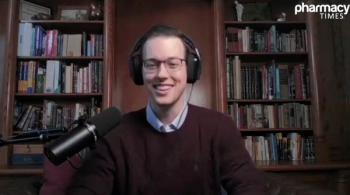
Pharmacy Practice in Focus: Oncology
- January 2023
- Volume 5
- Issue 1
FLT3 Inhibitors Sustain Prolonged Remission in AML Post HSCT
A retrospective analysis presents unique results for AML treatment.
Significant outcomes were observed in patients with acute myeloid leukemia (AML) who were treated with FMS-like tyrosine 3 (FLT3) inhibitors post hematopoietic stem cell transplant (HSCT), according to results from a retrospective analysis conducted at Norris Comprehensive Cancer Center, which were presented at the 64th American Society of Hematology (ASH) Annual Meeting & Exposition.1 The outcomes observed included the effects of FLT3 inhibitors on overall survival (OS) and relapse-free survival (RFS), in addition to the identification of specific factors associated with worsened graft-vs-host disease–free, relapse-free survival (GRFS). Because FLT3 inhibitors are novel therapeutics in treating AML, especially in the post-HSCT setting, the results of this retrospective analysis presented at ASH were unique.
Post-HSCT maintenance FLT3 inhibitor therapy, primarily with gilteritinib, resulted in improved OS and RFS, similar to the findings of prior studies with other FLT3 inhibitors.2 Among patients in the study receiving FLT3 inhibitors for maintenance, OS at 24 months was 96.2% compared with prior reports of 90.5% with sorafenib and 85% with midostaurin (Rydapt; Novartis Pharmaceuticals Corporation).3-5 RFS in the FLT3 inhibitor maintenance group was 89.7% at 24 months compared with prior reports of 85% with sorafenib and midostaurin.3-5 OS and RFS for this group remained high at 36 months.
Multiple factors were associated with worsened GRFS, including matched unrelated donor (MUD) transplant, pretransplant antithymocyte globulin (ATG), and lack of maintenance FLT3 inhibitors. With outcomes further diminished by genomic FLT3 mutations, incorporating FLT3 inhibitors in the post-HSCT setting may contribute to dramatic improvements in the current AML treatment paradigm, according to the authors.
FLT3 is expressed on the surface of a high proportion of AML cells and is the most mutated gene in AML, occurring in approximately 30% to 40% of patients with AML.6-8 Furthermore, the presence of FLT3 internal tandem duplication (FLT3-ITD) in patients with AML is associated with poor clinical outcomes, including an increased relapse rate and diminished OS.6-8 FLT3 inhibitors can be incorporated into any phase of AML treatment and are known to improve survival when used in the induction, consolidation and relapsed/refractory (R/R) phases of AML.6-8 Midostaurin is the first multikinase inhibitor to receive FDA approval when administered in combination with induction and consolidation therapy for newly diagnosed FLT3-mutated AML.8 Further, the addition of midostaurin to conventional induction therapy resulted in a dramatic improvement in survival compared with the standard of care, at 74.7 months median survival vs 25.6 months, respectively.9
Since this first FDA approval, several other FLT3-targeted therapies have been released, and their use in FLT3-positive AML has become ubiquitous. Because of their novelty, little is known about the impact of FLT3 inhibitors on graft-vs-host disease (GVHD) relapse and survival after HSCT. Further, besides during induction and consolidation therapy, there is no universal agreement on the timeline of use for FLT3 inhibitors.10 This prompted the investigators to further research the outcomes of patients with AML in the post-HSCT setting who have received FLT3 inhibitors at any point in their treatment at Keck Medicine of the University of Southern California.
Adult patients treated between May 2017 and July 2022 were retrospectively analyzed. All patients had an AML diagnosis with either a FLT3-ITD or FLT3-tyrosine kinase domain (TKD) mutation, received a FLT3 inhibitor at 1 or more points during their treatment course, and underwent HSCT; the primary end point was GRFS. Secondary end points included 2-year OS, 2-year RFS, and FLT3 inhibitor discontinuation due to adverse effects (AEs). Acute GVHD was defined per the 2018 Michigan Appropriateness Guide for Intravenous Catheters criteria and chronic GVHD was defined per the 2014 National Institutes of Health criteria.
Of the 40 patients included in the study, 30 (75%) had the FLT3-ITD mutation and 10 (25%) had the FLT3-TKD mutation. Age at time of HSCT ranged from 30 to 69 years (median = 47). Men and women were evenly represented and most patients were Hispanic (55%). The majority of patients (67.5%) were in first complete remission (CR) at the time of HSCT. European LeukemiaNet 2022 genetic risk stratification was mainly intermediate (77.5%) and adverse (15%). All patients received peripheral blood stem cells and most (70%) underwent myeloablative conditioning regimens. All patients received a FLT3 inhibitor before HSCT during the induction/consolidation phase or R/R phase before achieving CR. Of the 29 patients who used maintenance therapy after HSCT, 18 (62%) received gilteritinib whereas 11 (38%) received midostaurin.
Using Cox survival analysis, univariate predictors of AEs in GRFS were MUD compared with haploidentical-HSCT (HR = 4.77, P = .023), pretransplant ATG (HR, 3.99; P = .049), and lack of maintenance FLT3 inhibitors (HR, 3.03; P = .034). On bivariate analysis, MUD HSCT continued to be predictive when controlling for time from induction to HSCT and age at HSCT.
Patients who received a FLT3 inhibitor for post-HSCT maintenance therapy had significantly improved OS (P = .033) and RFS (P = .016) on Kaplan-Meier survival analysis, with an OS of 96.2% and RFS of 89.7% at 24 months and an OS of 90.1% and RFS of 82.8% at 36 months. Eight patients discontinued FLT3 inhibitors at maintenance because of AEs, having a shorter length of FLT3 inhibitor use at 116 days vs 230 days (P = .005).
According to the study authors, the ability to associate individual factors with the outcomes observed in the study remains crucial to the future development of clinically meaningful timelines for FLT3 inhibitor use. However, the study authors also noted it is important to recognize the limitations of the study as it was a single-center, retrospective study with a limited number of patients. Additionally, confounding factors such as conditioning chemotherapy, presence of infections, and HLA type mismatch may have affected GVHD risk in the study population.
Nonetheless, these findings highlight the important role of FLT3 inhibitor therapy in the post-HSCT maintenance setting and how pharmacists may contribute to sustained remission in patients with AML. Clinical pharmacists may play a critical role in helping maintain high OS and RFS rates in patients with FLT3-positive AML at 24 to 36 months post HSCT by ensuring they are receiving maintenance treatment with FLT3 inhibitors and are adherent. Similarly, increasing awareness of MUD transplant status, pretransplant ATG use, and maintenance therapy status may further contribute to patients experiencing lower GRFS events in the future.
Further, larger-scale studies, such as the ongoing phase 3 clinical trial BMT CTN Protocol 1506 (NCT02997202), can help confirm the generalizability of this study. Likewise, future studies evaluating the impact of such confounding factors will help raise awareness of the variables impacting GVHD risk in the post-HSCT FLT3 positive AML setting.
ABOUT THE AUTHORS
Samvel Nazaretyan is a PharmD student in the class of 2024 at the University of Southern California (USC) School of Pharmacy in Los Angeles, California.
Amir Ali, PharmD, BCOP, is a clinical pharmacist specialist and adjunct assistant professor of pharmacy practice at the USC School of Pharmacy and the USC Norris Comprehensive Cancer Center in Los Angeles, California.
George Yaghmour, MD, is an assistant professor of clinical medicine and associate director of allogeneic bone marrow transplant in the Jane Anne Nohl Division of Hematology at the USC Keck School of Medicine in Los Angeles, California.
REFERENCES
1. Chennapan K. Impact of FLT3 inhibitor-based therapies on outcomes of acute myeloid leukemia (AML) patients receiving allogenic stem cell transplantation: a retrospective study. Presented at: 64th American Society of Hematology Annual Meeting and Exposition; December 10-13, 2022; New Orleans, LA.
2. Perl AE, Larson RA, Podoltsev NA, et al. Follow-up of patients with R/R FLT3-mutation-positive AML treated with gilteritinib in the phase 3 ADMIRAL trial. Blood. 2022;139(23):3366-3375. doi:10.1182/blood.2021011583
3. Stone RM, Mandrekar SJ, Sanford BL, et al. Midostaurin plus chemotherapy for acute myeloid leukemia with a FLT3 mutation. N Engl J Med. 2017;377(5):454-464. doi:10.1056/NEJMoa1614359
4. Burchert A, Bug G, Fritz LV, et al. Sorafenib maintenance after allogeneic hematopoietic stem cell transplantation for acute myeloid leukemia with FLT3-internal tandem duplication mutation (SORMAIN). J Clin Oncol. 2020;38(26):29933002. doi:10.1200/JCO.19.03345
5. Maziarz RT, Levis M, Patnaik MM, et al. Midostaurin after allogeneic stem cell transplant in patients with FLT3-internal tandem duplication-positive acute myeloid leukemia. Bone Marrow Transplant. 2021;56(5):1180-1189. doi:10.1038/s41409-020-01153-1
6. Pratcorona M, Brunet S, Nomdedéu J, et al. Favorable outcome of patients with acute myeloid leukemia harboring a low-allelic burden FLT3-ITD mutation and concomitant NPM1 mutation: relevance to post-remission therapy. Blood. 2013;121(14):2734-2738. doi:10.1182/blood-2012-06-431122
7. Döhner H, Weber D, Krzykalla J, et al. Midostaurin plus intensive chemotherapy for younger and older patients with AML and FLT3 internal tandem duplications. Blood Adv. 2022;6(18):5345-5355. doi:10.1182/bloodadvances.2022007223
8. Abbas HA, Alfayez M, Kadia T, Ravandi-Kashani F, Daver N. Midostaurin In acute myeloid leukemia: an evidence-based review and patient selection. Cancer Manag Res. 2019;11:8817-8828. doi:10.2147/CMAR.S177894
9. Stone RM, Mandrekar SJ, Sanford BL, et al. Midostaurin plus chemotherapy for acute myeloid leukemia with a FLT3 mutation. N Engl J Med. 2017;377(5):454-464. doi:10.1056/NEJMoa1614359
10. Fischer T, Stone RM, Deangelo DJ, et al. Phase IIB trial of oral midostaurin (PKC412), the FMS-like tyrosine kinase 3 receptor (FLT3) and multi-targeted kinase inhibitor, in patients with acute myeloid leukemia and high-risk myelodysplastic syndrome with either wild-type or mutated FLT3. J Clin Oncol. 2010;28(28):4339-4345. doi:10.1200/JCO.2010.28.9678
Articles in this issue
almost 3 years ago
Novel Immunotherapy in Up-front Setting Shows Improved Outcomes in ALLalmost 3 years ago
Highlights From SABCS 2022 Clinical Trial DataNewsletter
Stay informed on drug updates, treatment guidelines, and pharmacy practice trends—subscribe to Pharmacy Times for weekly clinical insights.













































































































































































































